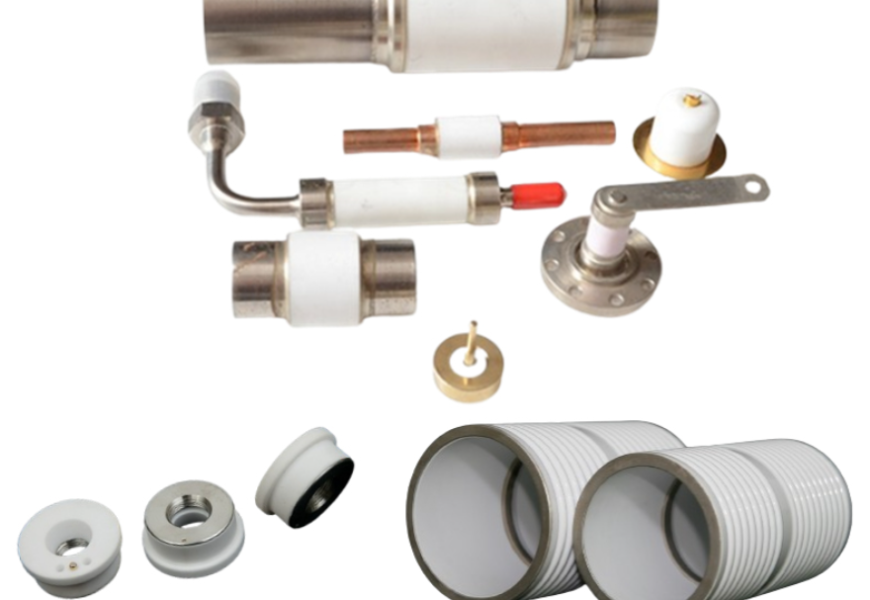In recent years, the renewable energy sector has witnessed significant advancements aimed at improving energy efficiency, reliability, and sustainability. A crucial part of these innovations involves the development and application of advanced materials, one of which is metalized ceramics. These unique materials, which combine the heat resistance and mechanical properties of ceramics with the electrical conductivity and thermal properties of metals, are having a profound impact on renewable energy systems.
As the world continues to transition towards greener energy solutions, metalized ceramics are proving to be a game-changer in applications such as solar energy, wind power, and energy storage. In this blog, we’ll explore how these innovative materials are enhancing renewable energy technologies and driving the industry toward a more sustainable future.
What are Metalized Ceramics?
Metalized ceramics are materials that have a thin metal coating applied to their surface, enhancing their properties and making them ideal for applications where both the strength of ceramics and the conductive qualities of metals are needed. This metal coating is typically applied through processes like sputtering, chemical vapor deposition (CVD), or electroplating, allowing for a strong bond between the ceramic and metal layers. These composite materials are designed to offer high resistance to wear, corrosion, and thermal shock, making them highly durable under extreme conditions.
The ability to withstand high temperatures and pressure while maintaining electrical conductivity is what makes these materials so valuable in renewable energy applications.
Metalized Ceramics in Solar Energy Systems
One of the most prominent applications of metalized ceramics is in solar energy systems, particularly in photovoltaic (PV) modules and solar thermal collectors. Solar panels require materials that can efficiently handle the heat generated by sunlight while maintaining electrical efficiency. Metalized ceramics play an essential role in this.
In solar thermal systems, they are used in the construction of heat exchangers and components that collect and store thermal energy. Their ability to withstand high temperatures and their excellent thermal conductivity make them ideal for transferring heat from the collector to the energy storage systems. This ensures that the energy is efficiently stored for later use without significant loss.
Moreover, the use of metalized ceramics in the back plates of solar panels helps dissipate heat, ensuring that the photovoltaic cells remain within their optimal operating temperature range. This, in turn, increases the overall efficiency of the solar panels, maximizing energy production and extending the lifespan of the system.
Metalized Ceramics in Wind Power
Wind turbines are another area where these advanced materials are making significant contributions. These turbines operate in environments subject to high mechanical stress, temperature fluctuations, and wear. As such, durable materials are required for the components that handle these extreme conditions, particularly the bearings, seals, and rotor blades.
In the case of wind turbine generators, metalized ceramics are used for their excellent wear resistance and thermal conductivity. The ceramic-metal composite materials improve the efficiency and longevity of key turbine components by reducing friction and heat build-up. The metalized layer provides additional strength and durability to the ceramic, allowing the turbine to perform reliably for a longer period.
Additionally, the use of these materials in power electronics within wind turbines, such as in power conversion units, helps to enhance the system’s ability to handle high voltage and thermal stress. This contributes to the overall reliability and longevity of wind energy systems, which are crucial for ensuring a consistent and sustainable energy supply.
Metalized Ceramics in Energy Storage Systems
Energy storage plays a critical role in the renewable energy sector, as it allows energy produced during peak generation times to be stored for later use. One of the challenges faced by energy storage systems is the efficient management of heat during charging and discharging cycles. Metalized ceramics help address this challenge by improving the thermal management of these systems.
In lithium-ion batteries, for instance, ceramic components are used to improve heat dissipation during high-charge cycles. Overheating in batteries can reduce efficiency and cause long-term damage, but by incorporating these materials, manufacturers can create battery designs that reduce thermal stress, thus increasing the battery’s performance and lifespan.
They are also used in other types of energy storage devices, such as super capacitors and flywheels, where high thermal conductivity and wear resistance are essential for maintaining system performance. These materials contribute to higher energy densities and faster charge/discharge cycles, making renewable energy storage more efficient and scalable.
Sustainability and Cost Efficiency
The use of metalized ceramics in renewable energy systems also has a positive impact on sustainability and cost efficiency. These materials are designed to last longer and withstand harsh environmental conditions, reducing the need for frequent replacements and maintenance. This is particularly important in renewable energy systems, which require long-lasting materials to ensure consistent performance over time.
Additionally, metalized ceramics are often more cost-effective than other high-performance materials, as they combine the strength and durability of ceramics with the conductivity of metals at a relatively low cost. This makes them an attractive option for renewable energy manufacturers who need to balance performance with budget constraints.
By improving the efficiency and lifespan of renewable energy systems, these advanced materials contribute to the overall reduction of energy production costs, making renewable energy more competitive with traditional fossil fuels.
Future Outlook for Metalized Ceramics in Renewable Energy
Looking ahead, the role of metalized ceramics in renewable energy systems is expected to expand as technology continues to evolve. As the demand for renewable energy grows, the need for more efficient, durable, and cost-effective materials will increase. These materials are poised to play a key role in the development of next-generation energy solutions, from solar panels with higher efficiency ratings to wind turbines capable of operating in more extreme environments.
Furthermore, ongoing research into improving the manufacturing processes for metalized ceramics could lead to even better performance characteristics and lower production costs. This would make them even more attractive for large-scale renewable energy projects, accelerating the transition to a cleaner and more sustainable energy future.
Conclusion
In summary, metalized ceramics are having a profound impact on the renewable energy sector. From enhancing the efficiency of solar and wind power systems to improving the performance of energy storage devices, these materials are driving innovation in green technologies. Their exceptional properties—such as high thermal conductivity, wear resistance, and durability—make them ideal for a variety of renewable energy applications. As technology progresses, we can expect to see even greater reliance on these materials in the renewable energy industry, helping to create a more sustainable and efficient energy landscape.









